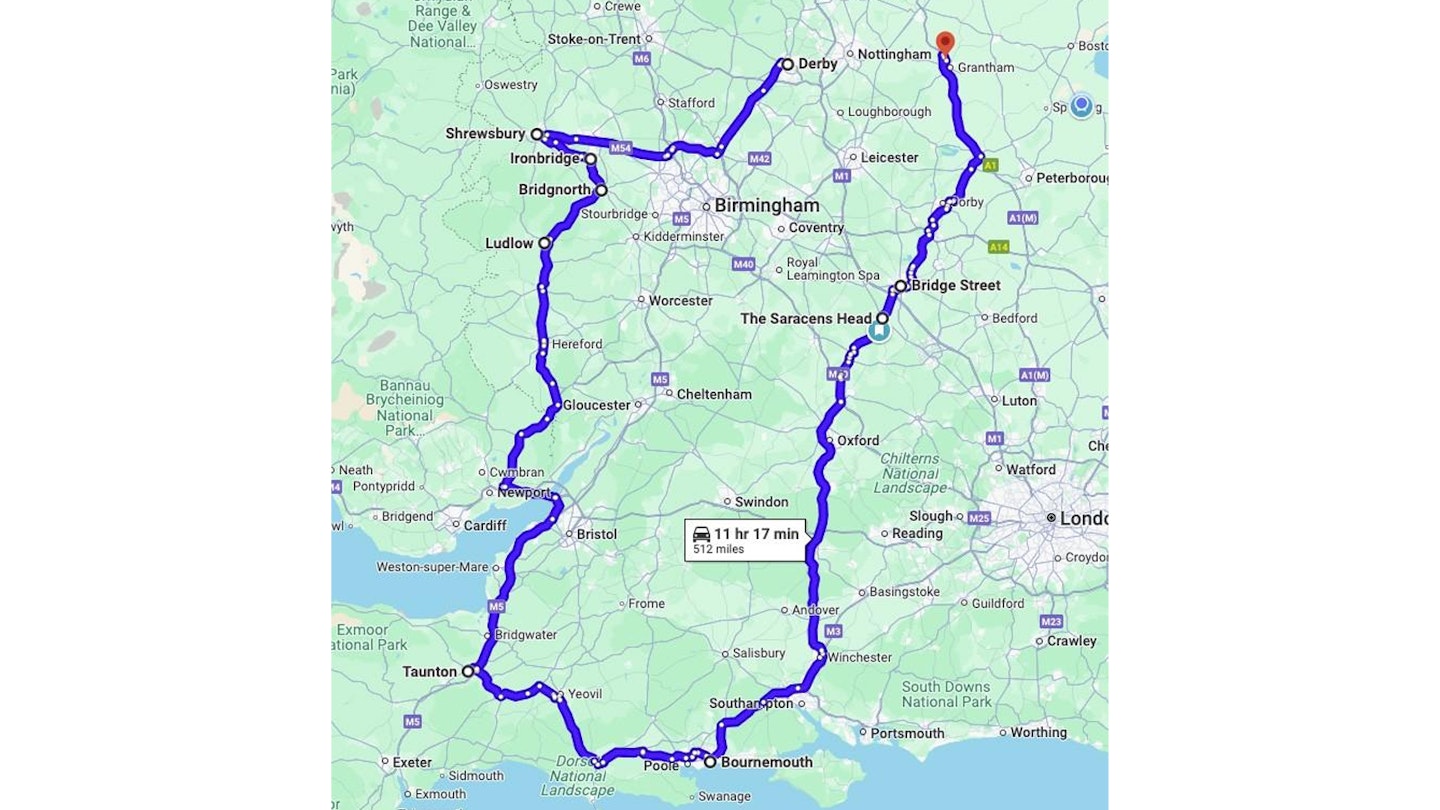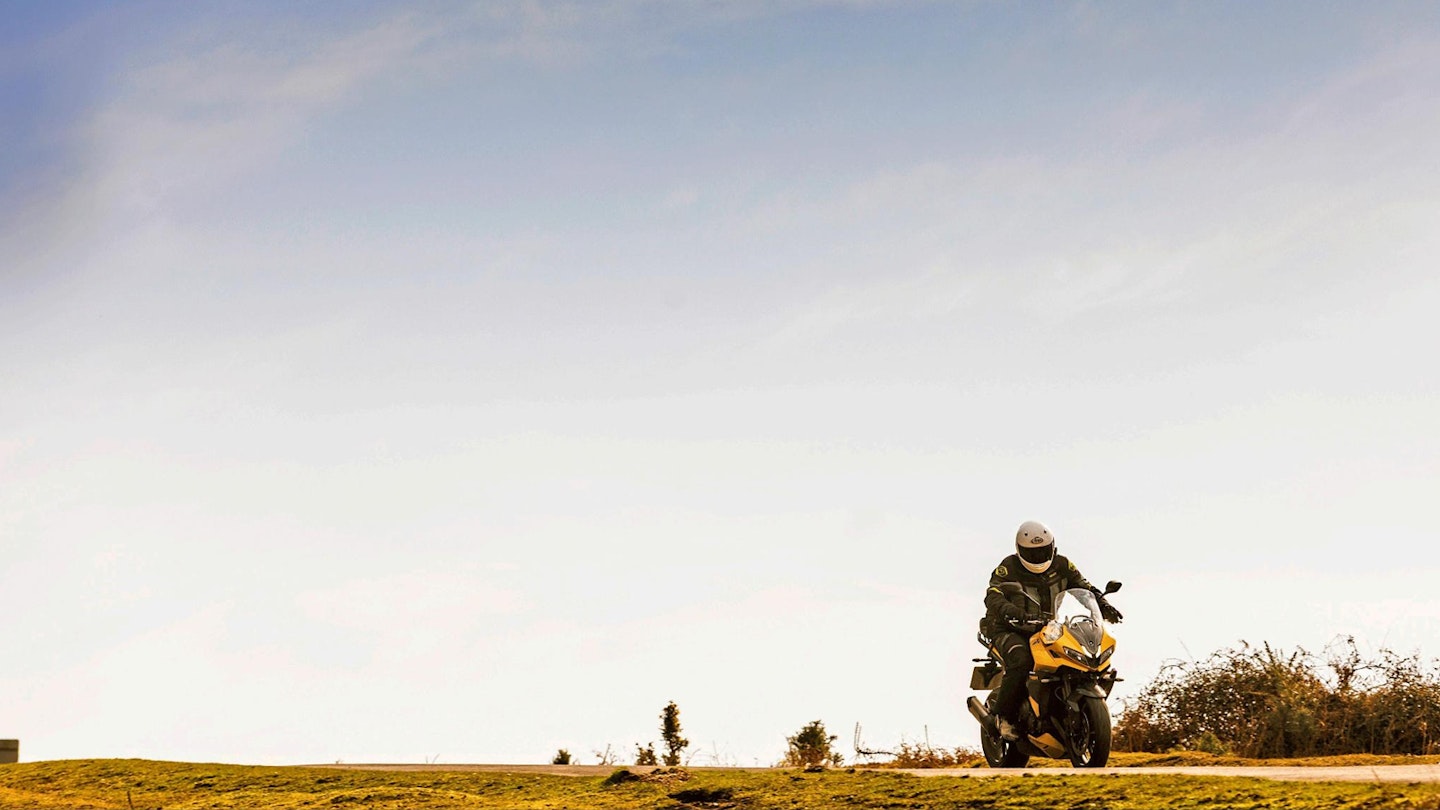1279-mile test
Triumph’s Tiger Sport 800 could be their greatest bike ever. To find out, we challenge the ‘world record’ set in 1905 by the first all-Triumph machine on this summer’s must-ride bike
By Simon Hargreaves

Shafts of late evening sunlight scatter like strobes through a great arch of birch branches reaching overhead, enclosing the arrow-straight road in a clawed tunnel. I frown, dazzled by the flickering contrast. We’re ten hours into the ride, lost in that beautiful, mesmeric zone of furrowed concentration where the Triumph’s haptic feedback – suspension, engine response, tyre grip, steering – is entirely absorbed into the rider’s perception of the world.
The road is bumpy and ill-kempt, ripples and potholes shuddering through the bike – and, thoughts drifting in the flashing daylight, my imagination plays tricks. For a moment this isn’t 2025; it’s 120 years earlier in 1905, right back in the formative years of motorcycling. And the Triumph isn’t a brand-new Tiger Sport 800, it’s the very first all-Triumph motorcycle: a three-horsepower single sputtering along this very same ancient trackway in pursuit of the very same goal we’re attempting now. Still dreaming, I pull over for a moment at the side of road, step off the bike, and guzzle from a water bottle to reset my wobbly head.
Remind me, what are we doing here?
The then...
In 1902, the Triumph Cycle Company – a Coventry bicycle manufacturer founded by German Siegfried Bettmann, soon joined by countryman Mauritz Schulte – began bolting Belgian engines onto their pushbike frames (as did numerous bicycle manufacturers across Europe). In 1905 they released the first model powered by their own engine: a single-speed, 363cc four-stroke single making three horsepower. No fancy model names 120 years ago: it was simply called the Triumph 3hp Motor Bicycle.
Motorcycling itself was barely a decade old, but already two magazines catered for riders. One, The Motor Cycle, featured a popular writer called Canon Basil H Davies, going by the pen name Ixion, who went on to write for the magazine until his death in 1961, aged 81.

In 1905 he proposed using the Triumph to establish, in his words, the following: 1: ‘Whether long-distance motorcycling is as fatiguing and nerve-racking a pursuit as the halfpenny press pretends 2: ‘Whether it is ultra-expensive in the matter of repairs 3: ‘Whether the modern machine can be trusted to run long distances in the hands of a man who is destitute of mechanical training and ability?’
Damn, he’s literally describing me… Anyway, to this end, Ixion planned a six-day, 1279-mile challenge riding over 200 miles a day to six destinations and back again, radially, from a base at a hotel in Oxford – along with an official timekeeper to check authenticity. His targets were Bournemouth, Taunton, Ludlow, Shrewsbury, Derby and Grantham – each just over 200 miles there and back from Oxford.
...and the now

One hundred and twenty years later, Triumph have just released the Tiger Sport 800. It’s a bike that, on paper, represents a summation of the modern Triumph factory’s journey since its rebirth in the early 1990s; it’s an aggregation of its engine and chassis technology, production expertise and practicalities, marketing positioning and hard economics. If Hinckley is a dartboard, the Tiger Sport 800 is the bullseye: the right engine, performance, chassis, ergonomics, build quality, market position and, crucially, price.
Or is it? To find out, we’re going to recreate Ixion’s 1905 ride and his target of 1279 miles – in three days, not six. We’re adapting his radial routes to something more circular and in keeping with today’s motorcycling – but still riding on roads the man himself bestrode 120 years ago.

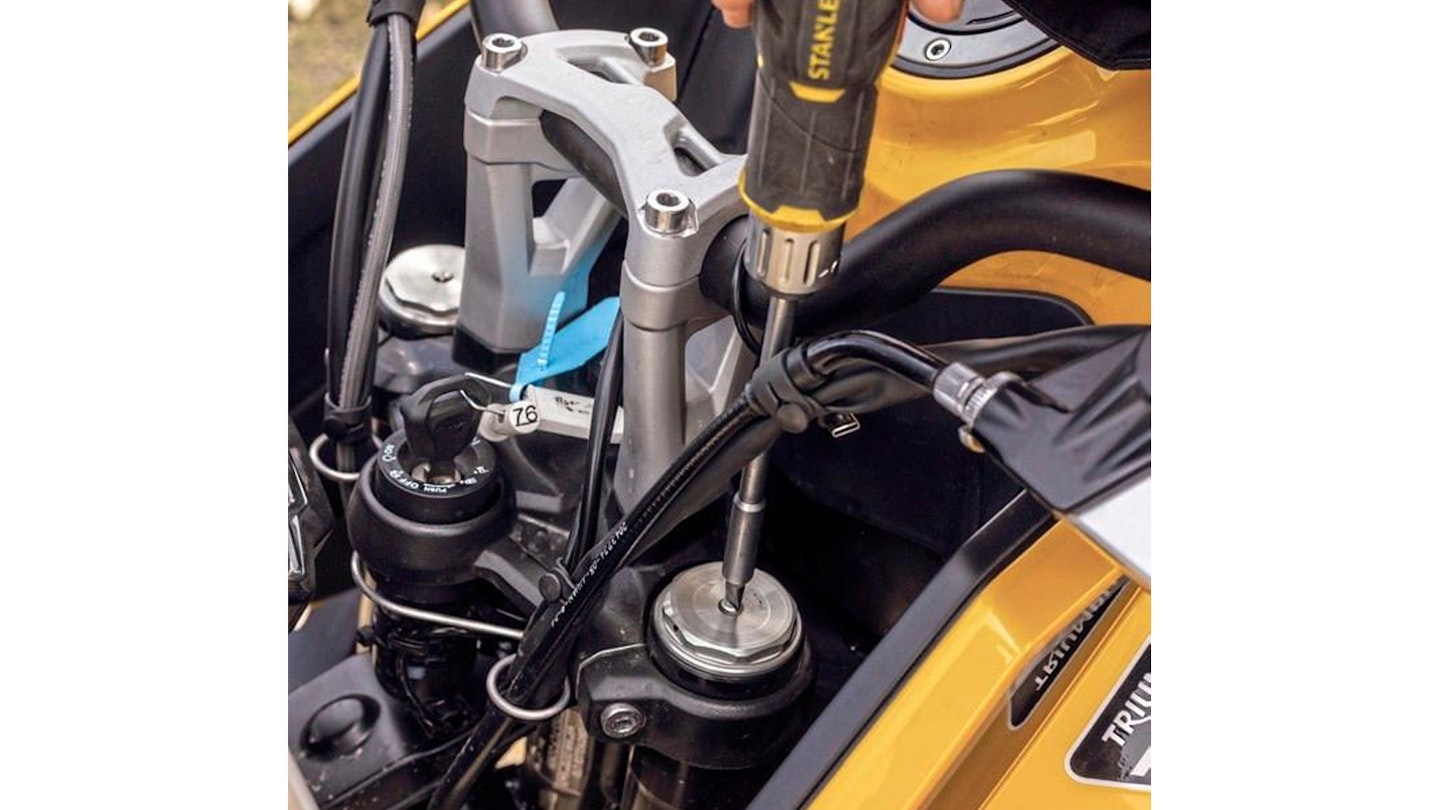
The last working 1905 Triumph

Nick Jonckheere is a Belgian veteran motorcycle rider and restorer, who owns the world’s sole remaining functional 1905 Triumph (the only other 1905 bike is a non-runner in the National Motorcycle Museum in Solihull). He came by the bike via a series of happy coincidences – in 2010 he was looking for a spare wheel for another bike, and found a seller in the UK. ‘So I went to the chap’s house and bought it,’ says Nick. ‘While I was there, I casually asked him what else he had; he said he’d got an old Triumph frame. When I saw it, I instantly recognised the double front frame tube as 1905.
‘When I got it home, I started looking for an engine, but couldn’t find one; they’re just too rare. A couple of months later I got a message from the same gentleman – he had a couple of Triumph engines under his bench, from a pile of parts his uncle acquired 50 years previously. One was smaller than the others, marked number 314. He thought it might be the engine for the frame – and when I tried it, it fitted exactly. It’s the engine from that frame. It’s even still using the original piston. At that point, I had a project.’
Nick rebuilt the rest of the bike from another source of period Triumph spare parts, with the exception of the fuel tank which he had to make using the other 1905 bike, in the National Motorcycle Museum, as a template.
In 2015, to commemorate the 110th anniversary of his bike, Nick himself rode a leg of the Ixion route, from Oxford to the New Forest, on the 1905 Triumph, on the exact same day. He avoided busy areas because they’re so much hassle with no clutch, but otherwise followed the same route, and managed the distance back to Oxford in 14 hours, and with only one mechanical hiccup, when he needed to adjust the magneto.
‘The 1905 is so easy to ride; I’ve had so much fun on it – it’s my favourite bike,’ says Nick. ‘But I’m not going to come over and have another go – the logistics are a nightmare!’
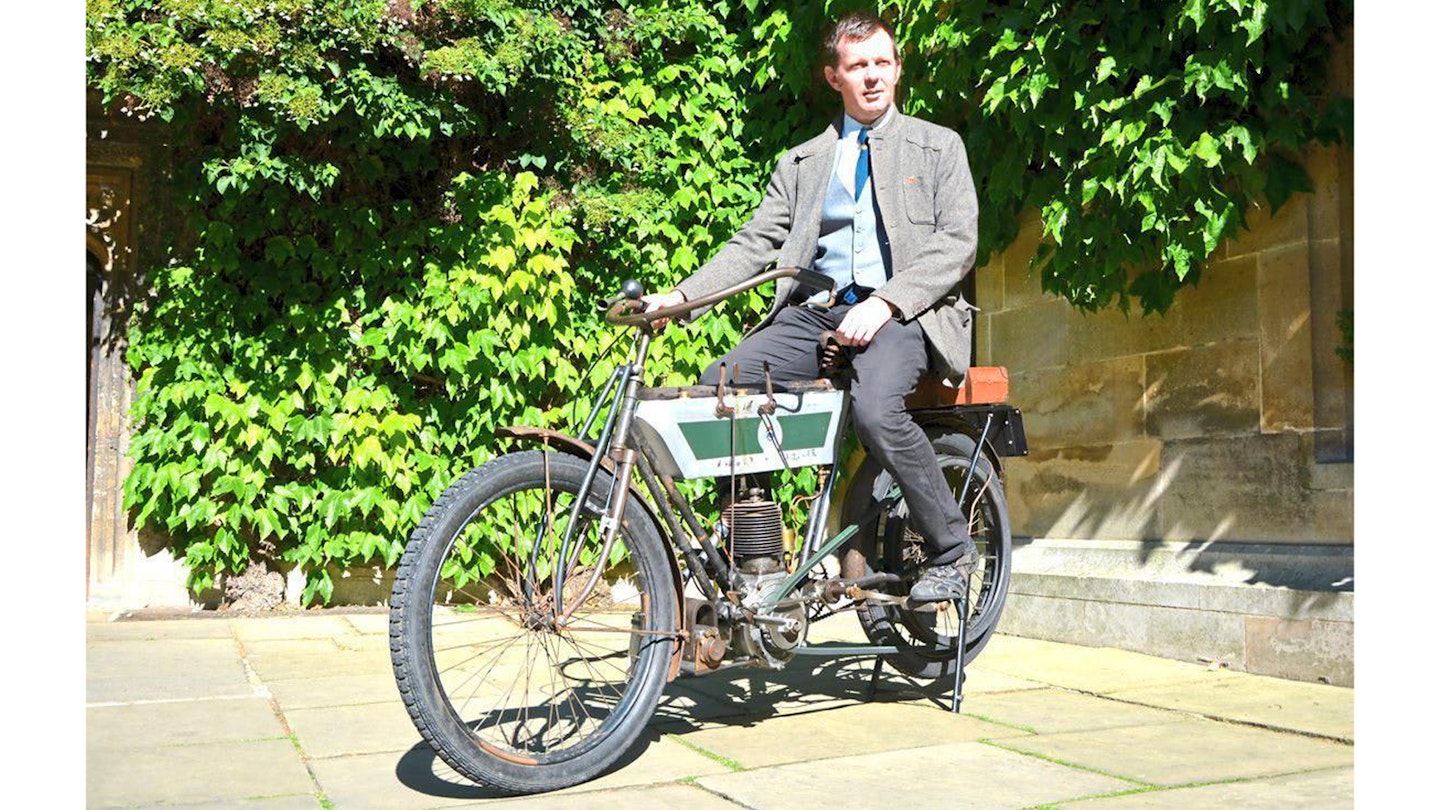
Erm... did Ixion cheat?
Triumph used Ixion’s successful ride as proof of reliability in their advertisements for the 1905 machine, and in a small way his efforts helped make the company Britain’s biggest bike manufacturer. But was it actually a paid endorsement rather than an independent test?
In his later years Ixion remembered the idea’s origin, saying it was dreamed up between Triumph’s Mauritz Schulte and himself: ‘He was so sure of its merits that he asked me to suggest some stunt which might convince the public.
Together we decided if it could be ridden 200 miles daily for six consecutive days, it would obviously be a good buy for any citizen who desired cheap personal transport.’
This wasn’t reported in Ixion’s original story. Neither was the fact it took two attempts – on the first, the twin-tube frame fractured after five days, so Schulte arranged for a second bike, this time with a single-tube frame, and Ixion restarted the entire test again the following week. He also fitted and ground-in a new exhaust valve every night. And there’s even a hint Schulte himself paid for the entire enterprise – it’s unlikely The Motor Cycle magazine would’ve paid for a fortnight in a hotel, plus the services of a paid timekeeper.
Day one: the start
Every great ride starts with breakfast. Ixion said so himself: ‘Breakfast rides are one of my favourite fads.’ Bikers, eh? I’ve just ridden 30 miles from Bike HQ and opt for a bacon bap at the A1 Stadium Diner. We’re kicking off from Great Gonerby, just north of Grantham in Lincolnshire, and the north-eastern tip of Ixion’s ride. He mentions riding the ‘twenty-one miles and twenty-one hills’ between Grantham and Stamford – by which, according to archive maps, he can only mean he rode the A1 when it was called the Great North Road and, at the time, likely a Macadam surface of crushed stone, with no tar.
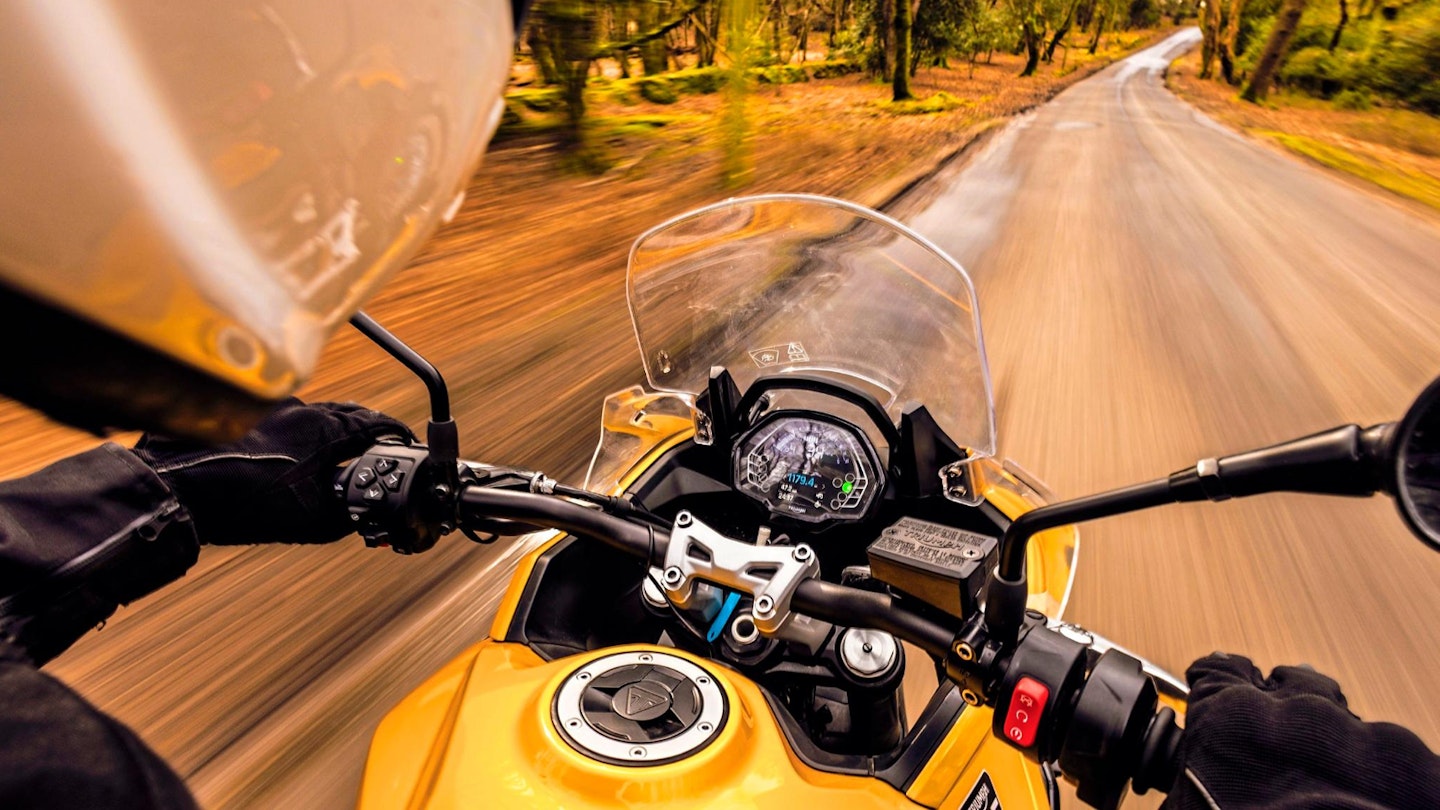
The surfaces Davies faced in 1905 would have varied from basic compacted stone, to cobbles in town (made slippery by horse dung and tramlines), to rural trackways. Modern tarmac – with tar as a binder – had only just been invented in 1902 and was still being developed.
Today, the Tiger makes short work of the A1, filtering off at Stamford and following Ixion’s likely route on the A43 to Corby, then Kettering and into Northampton. The morning traffic is chaos, pressing the 800 into maximum overtake mode, slipping past cars in small bursts of acceleration, filtering to the front at traffic lights with despatch-rider vigour. It’s brilliant at the job, 113bhp inline triple rippling with short-shifting poke between 5000-6000rpm, impeccable quickshifter favouring gentle, seamless changes rather than jerky race-style shifts. The 798cc motor has an eye-opening whiff of Street Triple midrange about its performance, barking when the grip is twisted. And its commanding riding position tilts gently forward, narrow bars and slender form sliding into gaps that would have been quite a squeeze for a 1905 Triumph. Not that Ixion would’ve needed any of this. In 1905 there were fewer than 15,000 motorised vehicles in the whole of the UK, and the only things he’d be overtaking were pedestrians and livestock: ‘Chief annoyance was the number of domestic animals on the road; pigs, sheep and cattle made the hill climbs exciting.’
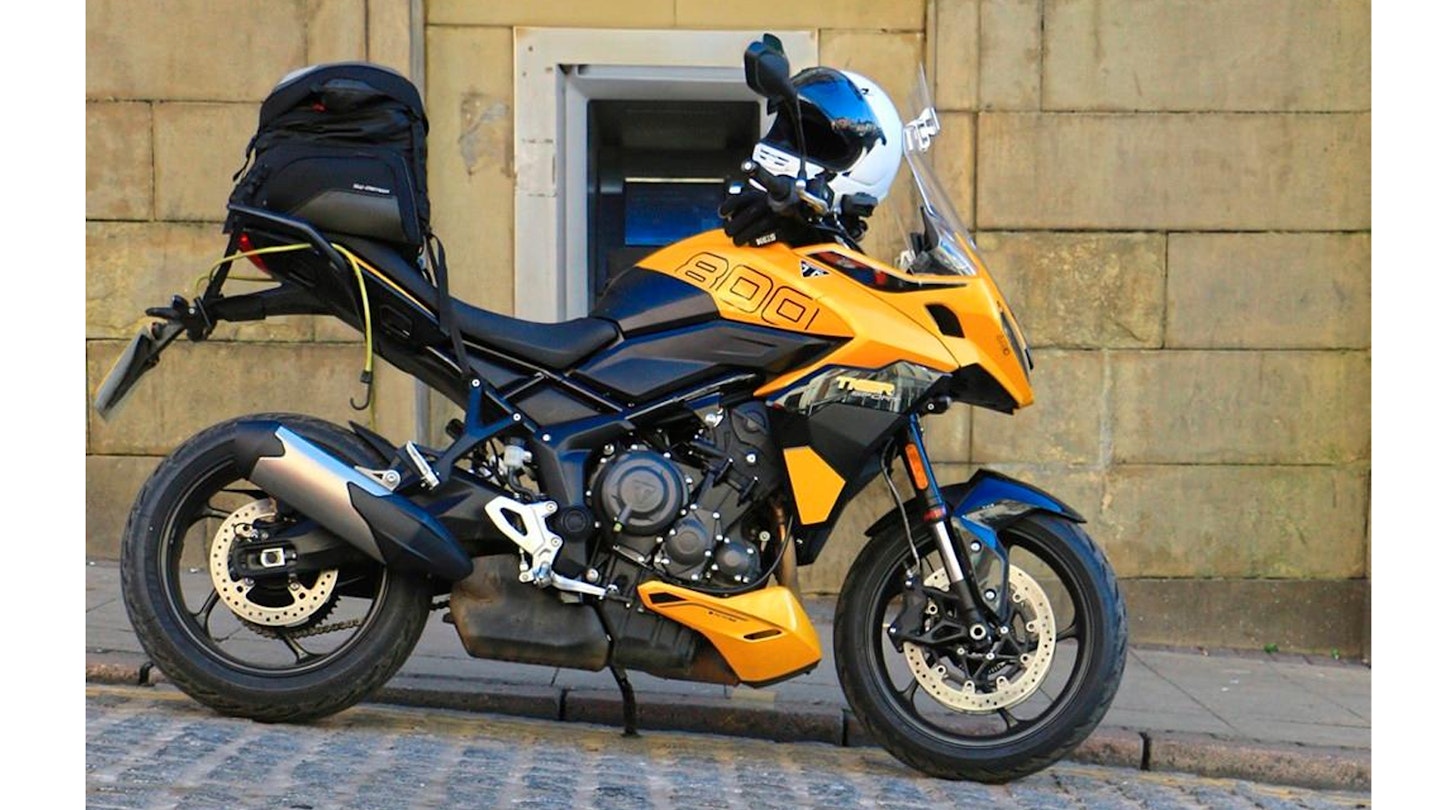
One by one the towns tick past on my loop – in Northampton I visit Bridge Street in the centre of town where, according to Ixion in 1905, ‘the knobbliest and cobbliest paving in the world may be found.’ There are indeed still cobbles, but only a strip a few feet wide, doubtless health ’n’ safety-approved and not the wonky old polished sort Ixion would’ve faced. At Towcester I visit the Saracens Head hotel, called the Pomfret in 1905, where Ixion stopped for tea. The Venus and Apollo statuettes set into the hotel walls would’ve gazed down on Ixion’s Triumph and, 120 years later, they look down on another. At Oxford I visit Ixion’s base for his trip, the George hotel, but it’s long gone, replaced by a bank.
We ride on through Reading and Basingstoke, where shimmering glass towers, raised carriageways and concrete tower blocks would be horrifyingly alien to Ixion, in the same way his Triumph would be horrifyingly alien to a modern rider like me. It’s an interesting thought experiment: which would you rather have – Ixion’s remote, rural, bucolic simplicity with a prehistoric machine and ancient oilskins to ride in, or our traffic-fouled urban jungles and choked roads but a modern bike with all its sophistication and performance?
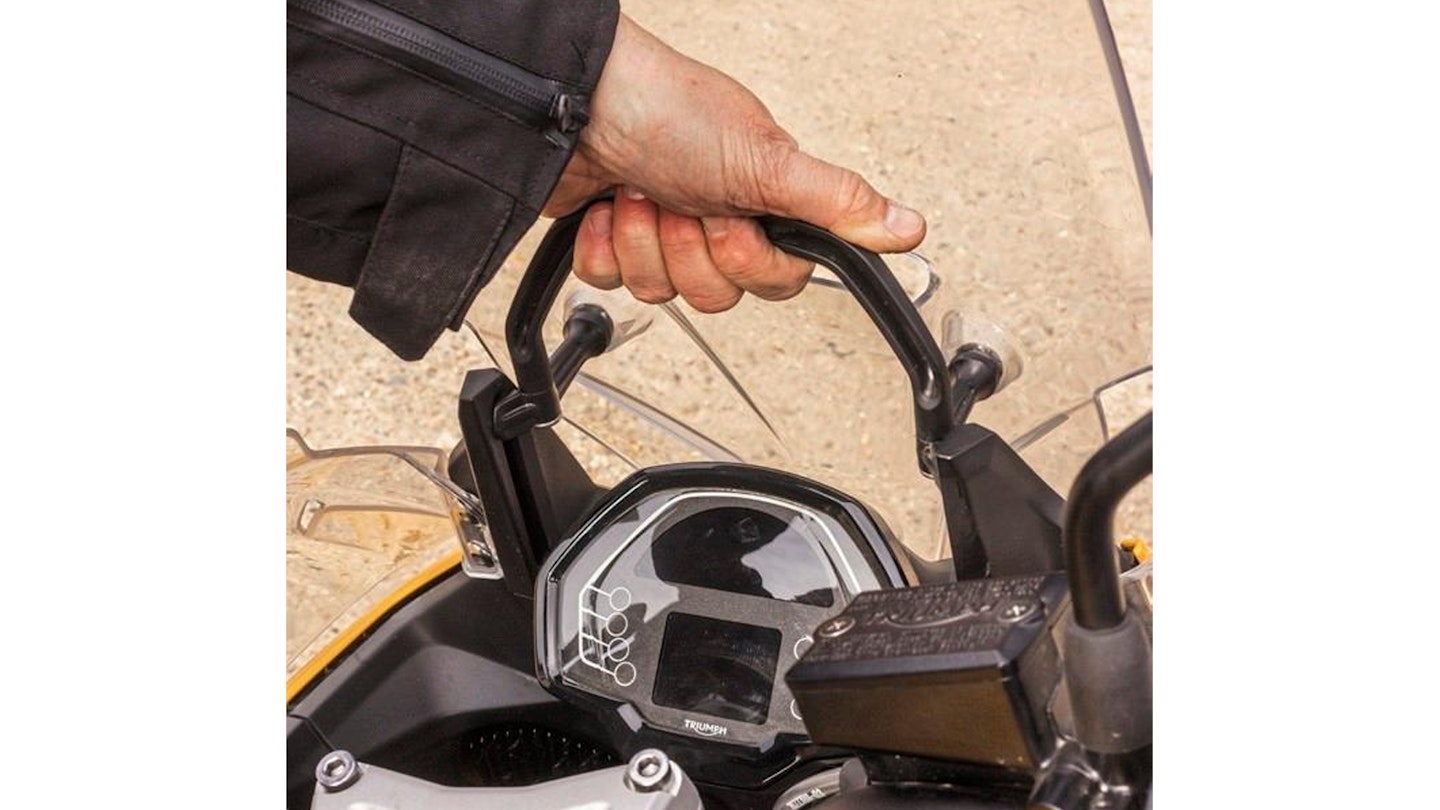
I forgo motorways as long as possible – Ixion wouldn’t have dreamed of them either – but I have to use them eventually; even with a modern bike, it’s a tall order to cover 1279 miles in three days on just England’s As and Bs. But right now I take the A33 instead of the M3 between Basingstoke and Winchester – ramrod straight, it’s an old Roman road which fell into disuse (like many trunk roads) in the middle of the 19th century when railways arrived, but by 1905 was in the process of rejuvenation for motorised transport. Still made of crushed stone, though, making punctures likely and testing the durability of frame welds, wheels, suspension and rider.
We pass through Winchester, where Ixion had to change piston rings at the roadside (he carried spares; they were consumable items) – obviously the Tiger doesn’t miss a beat. We stop for fuel at Southampton, then head into the New Forest where the 800 runs happily between early flowering gorse bushes as it heads south.
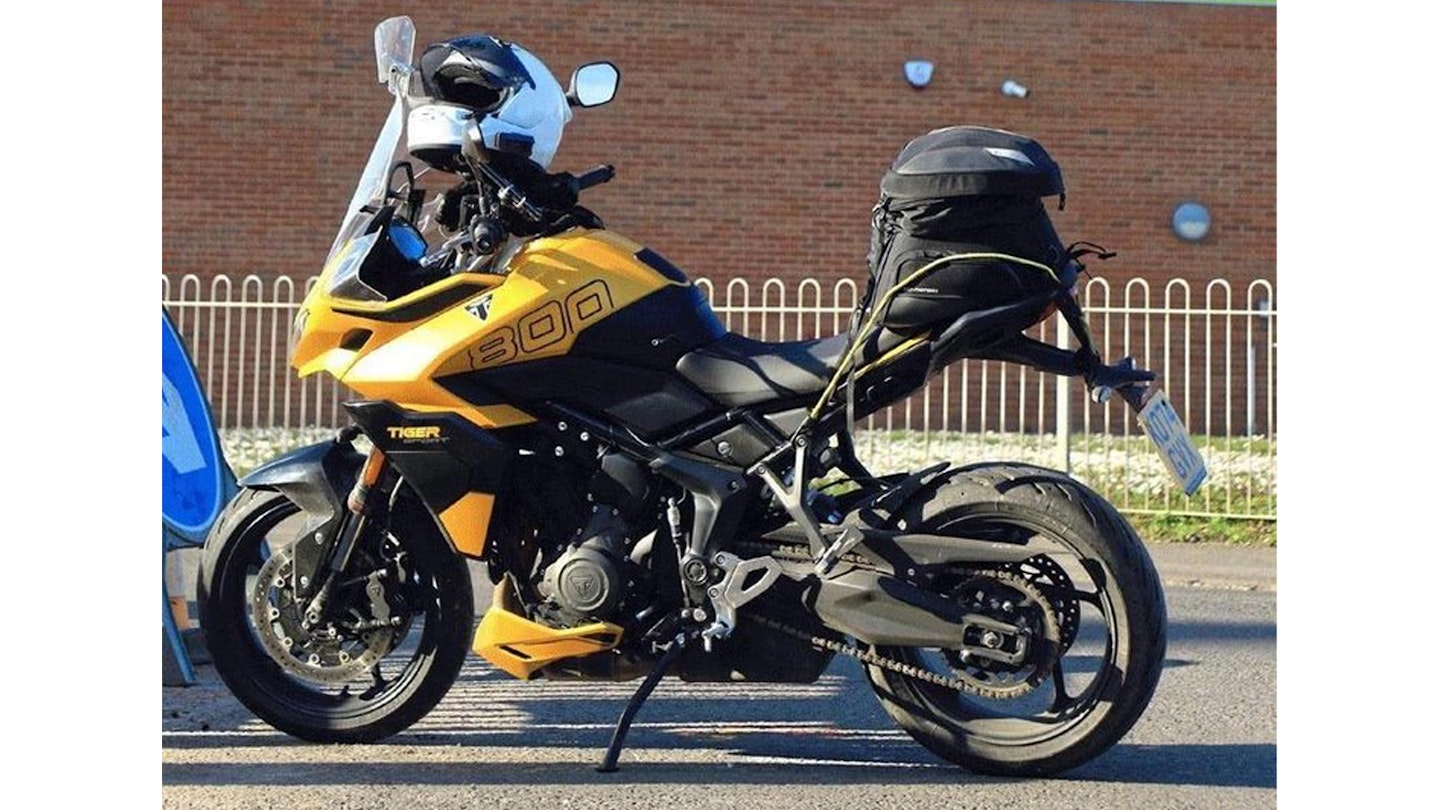
Bournemouth arrives, another of Ixion’s destinations. A quick stop by the pier and we’re away again – if I’d known it, I’d have ridden past the house where Canon Basil H Davies spent his last days in 1961; it’s a few hundred yards from here. Next stop is Taunton, so I ride across country via Dorchester and Crewkerne, Tiger piling on the miles. I’ve been on the bike for around eight hours by now, and not a hint of discomfort – I’m over twice Ixion’s age and pretty sure I wouldn’t have managed the hardcore pedalling he’d needed to help his Triumph climb hills. His bike had just one gear, and it was a tall one to enable it to achieve a 40mph top speed, so he had to help the bike along and deliberately avoided steep climbs. ‘Machines at this date were habitually geared too high. Buyers desired speed,’ Ixion later wrote; bikes might have changed in 120 years but riders haven’t.
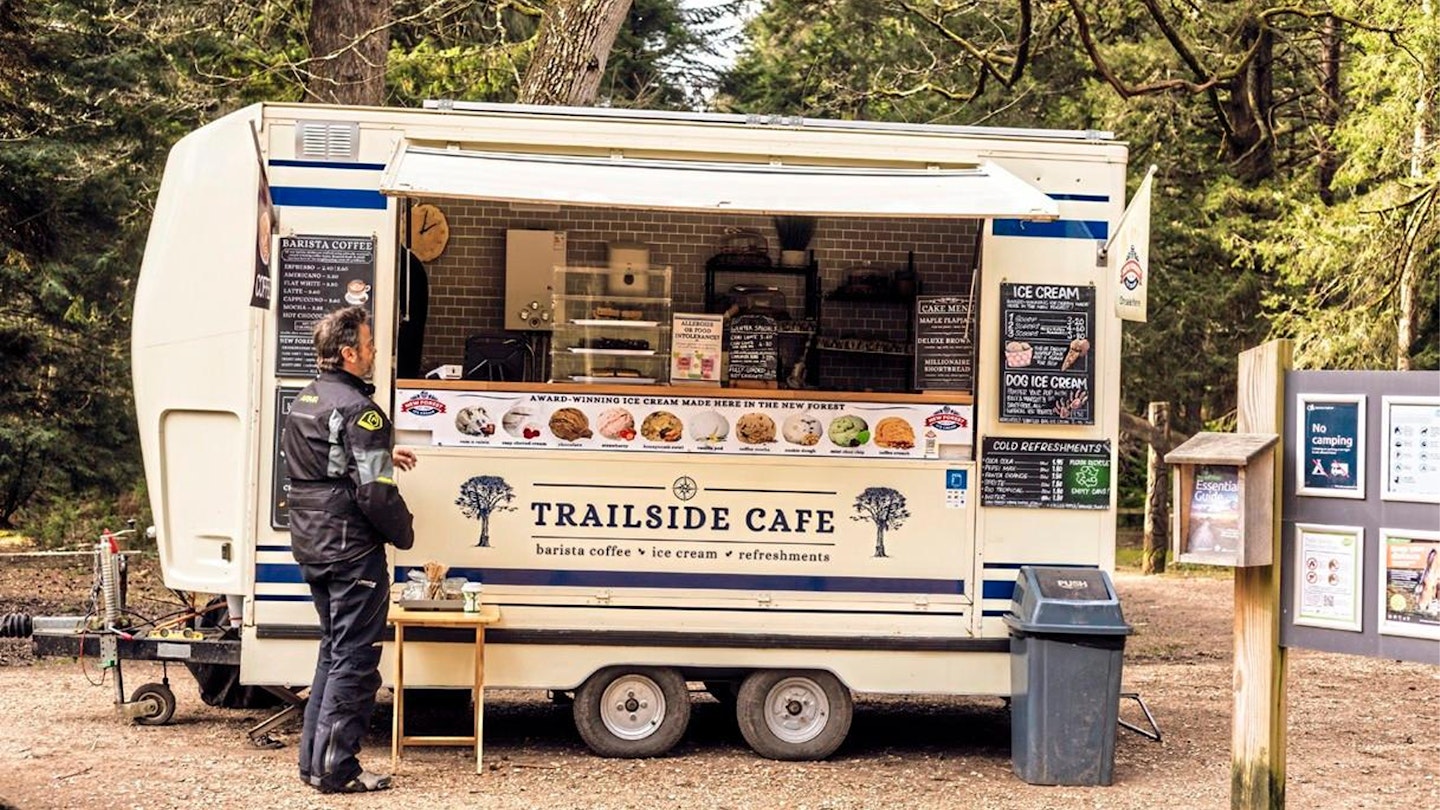
By now the day is pressing and the miles aren’t – I need to get a shift on, so the M5 carries me north via my second refill of the day at Michaelwood until I jump off at Gloucester and head for Leominster (Ixion went via Hereford), then Ludlow – and by now it’s getting dark. The Tiger barrels down the A49 into town, then out again, into the indigo countryside to Shrewsbury before setting the sat nav for a hotel in Derby, arriving at gone 10pm. I’ve ticked off all six of Ixion’s destinations in one go – but covered less than half the distance. More miles in the morning.
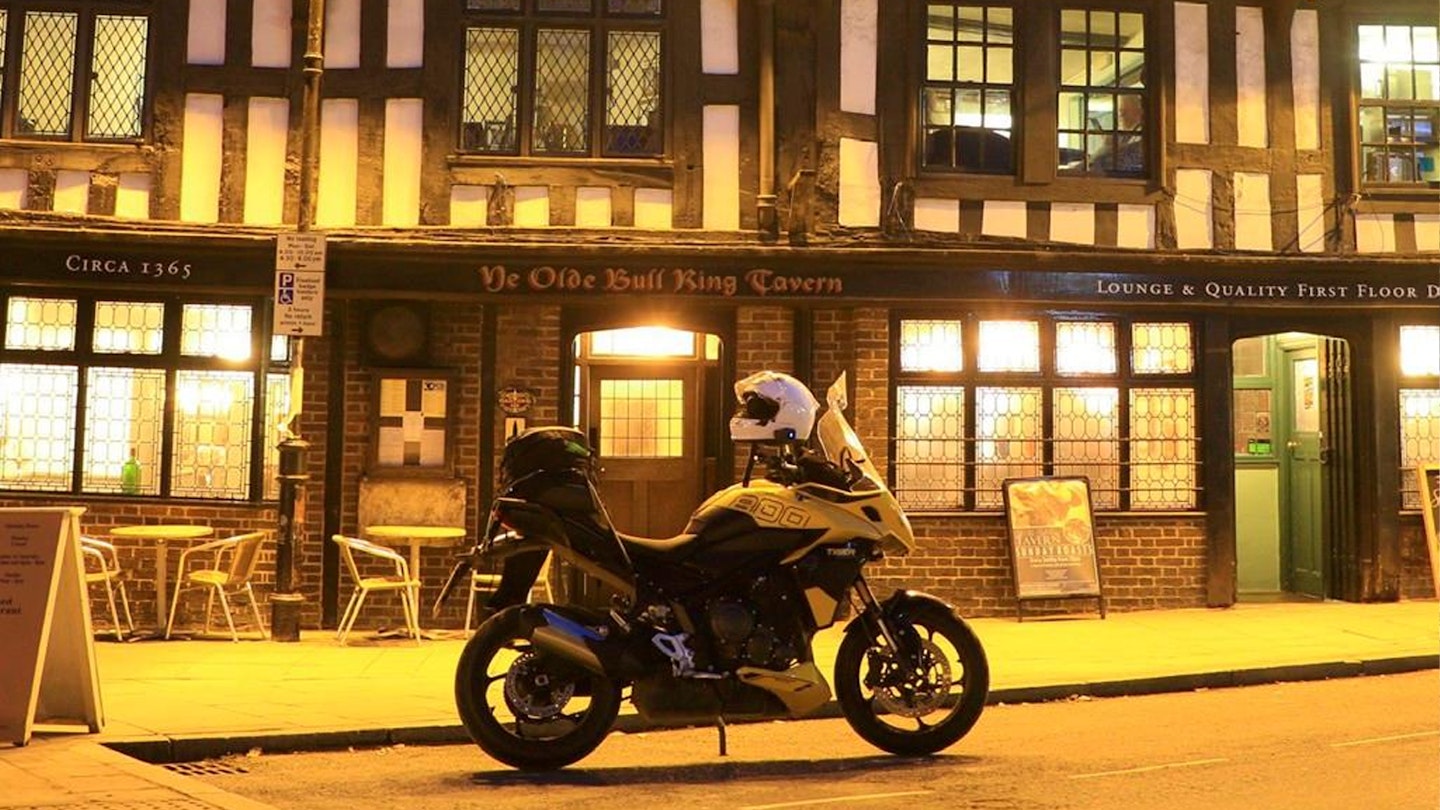
Day two: the middle
In my haste to get to Derby last night, I bypassed two towns Ixion makes particular mention of – so, after a morning refuel, I double back to visit Ironbridge, near Telford, the (disputed) birthplace of the industrial revolution. Ixion noted: ‘The bumpy hill down into Ironbridge should be avoided by all motorcyclists.’ Happily, there are fewer bumps today, and the Triumph’s suspension deals with what’s left.
Next stop is Bridgnorth, where Ixion saw a red sign advising cyclists to dismount on the hill between the upper and lower towns. ‘On this a restive horse made me stop my engine round the lowest bend, and it is rather to the credit of the Simms magneto that it picked up again and climbed it,’ he wrote. I stop on the same bend; no horse or sign, but plenty of chevrons. My Triumph climbs the hill as well, without pedal assistance.
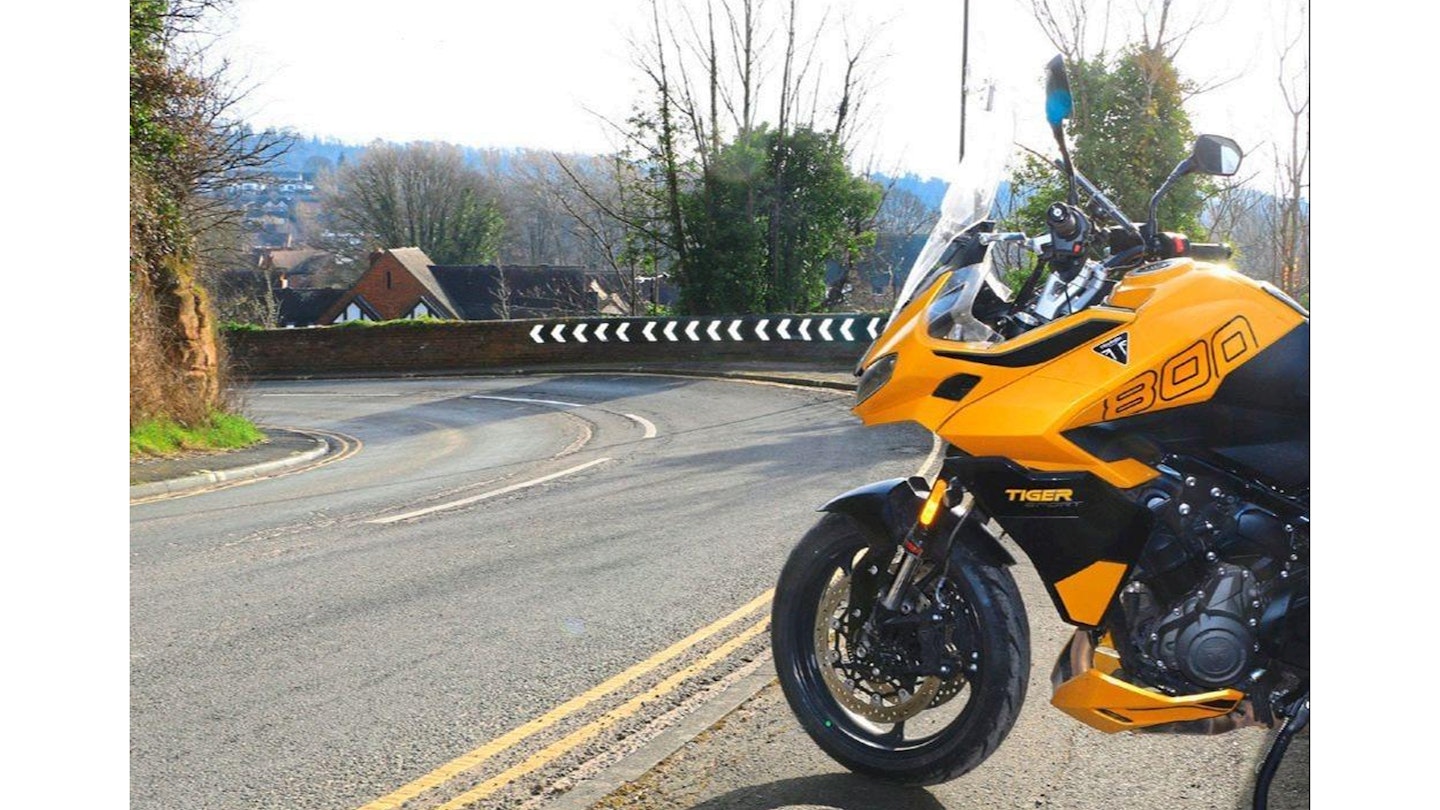
I need to make up some time, so fire down the M5 to Taunton and refuel before rejoining Ixion’s trail through Glastonbury, Wells, Bath, Chippenham, Malmesbury, Cricklade, Faringdon and into Kingston Bagpuize, where Ixion had a run-in with the law. Motorcycles were unpopular with the public in 1905 – they kicked up dust and irritated pedestrians. The speed limit had just been raised, in 1903, from 14mph to a heady 20mph – but prosecutions were so common a club was formed in 1905 to help motorists and motorcyclists evade speed traps by sending a ‘spotter’ on ahead. The club was called the Automobile Association – the AA. Ixion doesn’t go into details of his ‘unmerited attention from the police’; maybe, as a man of the cloth, he used his dog collar to good effect.
At Oxford, I relent from my purpose and point the Tiger home north of Peterborough. Tomorrow is the final day, when I’ll head down these exact same roads back to the New Forest for some photography. My calculations are the Tiger will trip past 1279 miles somewhere around Oxford on the way back.

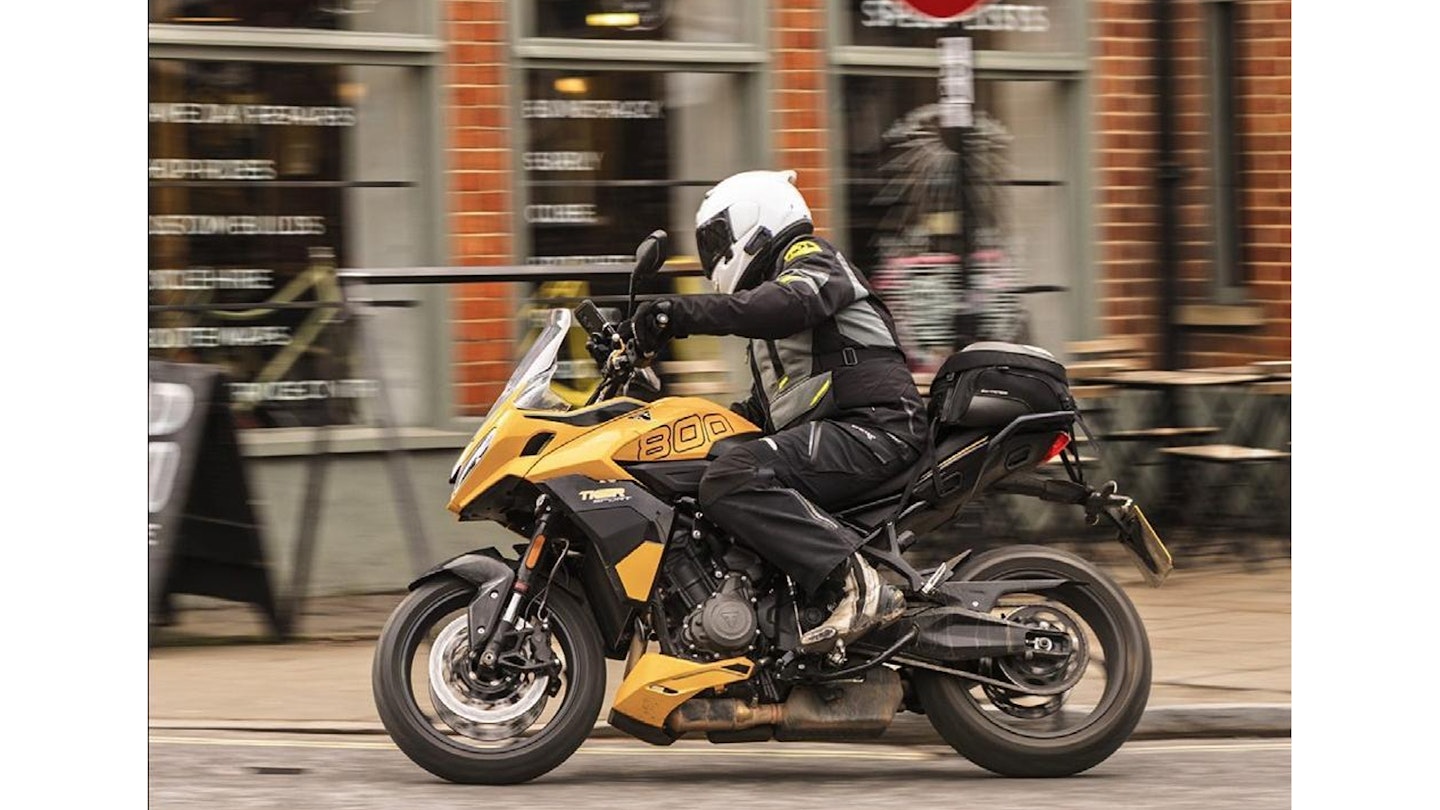
Day three: the end
And so it proves – after a long ride back to Southampton, followed by a run around the New Forest – even visiting Lyndhurst, as Ixion did – and hammering back up the A34 at the end of the day, the required 1279 miles trips over at Didcot. It’s been an intense three days on the Tiger, but I’m deeply impressed – with the bike, but also the scale of Ixion’s achievements. What he did wasn’t easy – on a bike with no suspension, over unpaved roads, with meticulously planned fuel stops, even working out hill gradients beforehand to make sure the bike could climb them, sometimes with pedal assistance. And 1905 reliability meant riding with a set of spare parts and the knowledge to use them, not to mention carbide headlamps for night riding and inadequate riding kit. Riders had to be ingenious, self-sufficient, adaptable and durable; saddles back then were bicycle seats. It makes me feel positively cossetted and spoiled silly by modern riding. But then, Ixion didn’t have to contend with endlessly dodging traffic – we should perhaps appreciate more how much skill goes into modern riding’s ballet of hazard avoidance. And also dodging today’s equivalent of ‘unmerited attention from the police’, ahem.
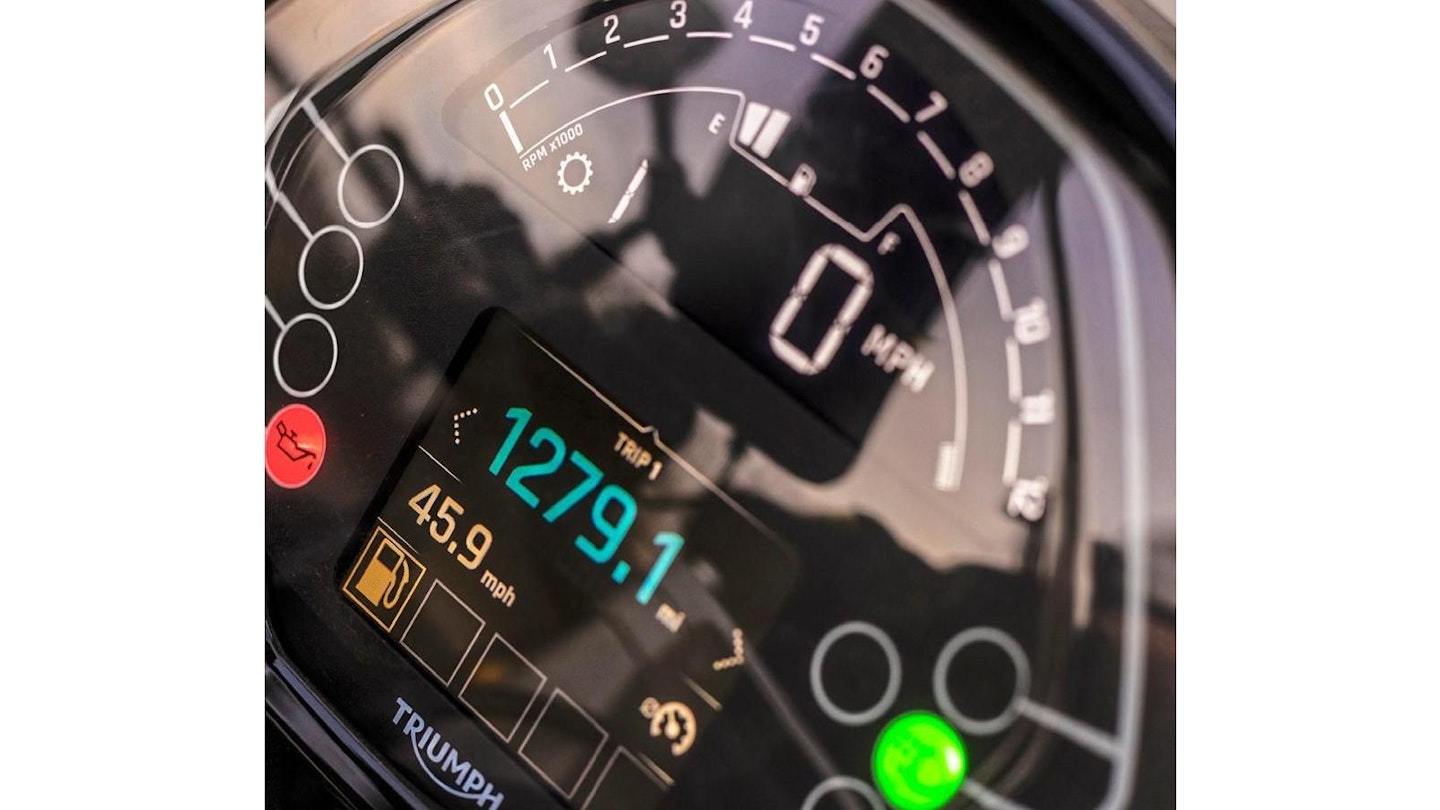
The Tiger’s engine is flush with perky performance in tune with today’s traffic, the chassis is softly sprung and heavily damped – which feels nice on smooth roads but gets aggressive when it’s bumpy – and the riding position and ergonomics are perfect for me (although the screen needs a flip-visor adding to reduce wind noise, and the adjuster sometimes resets itself for no apparent reason). It’s supremely practical; the tank range is over 200 miles if you go steady, yet still over 170 miles if you don’t. It’s every inch a Hinckley Triumph – I reckon it’s the most complete Triumph ever.
At the end of his ride, Ixion said: ‘The ride was intended to prove four things – the reliability, the economy, the comfort, and the radius of a good modern motor bicycle; and I venture to say it has amply fulfilled its purpose.’ Amen to that.
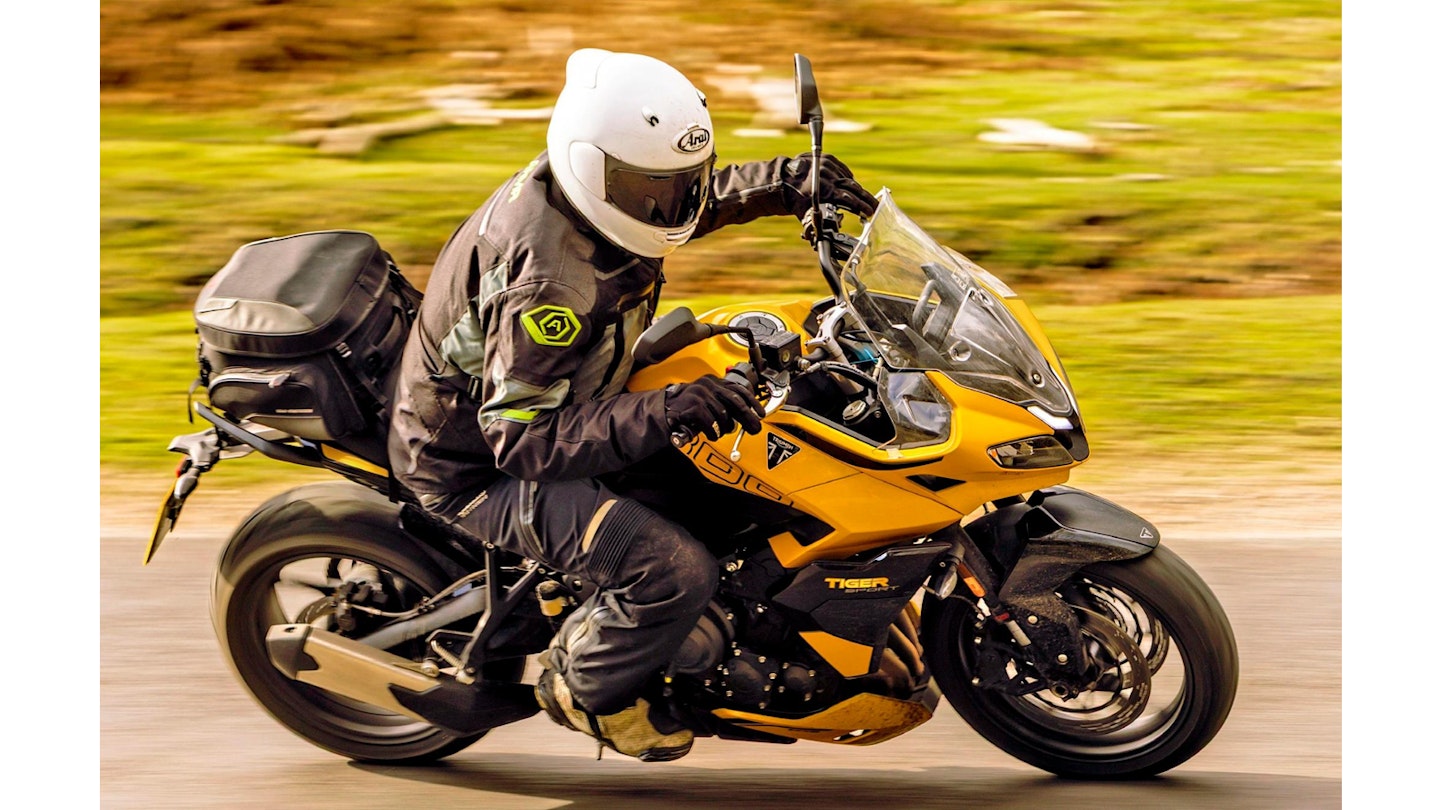
The route
We covered the same distance as Ixion but in half the time, and opted for one big more-or-less loop rather than six one-day trips based in Oxford. This was the intended route…
